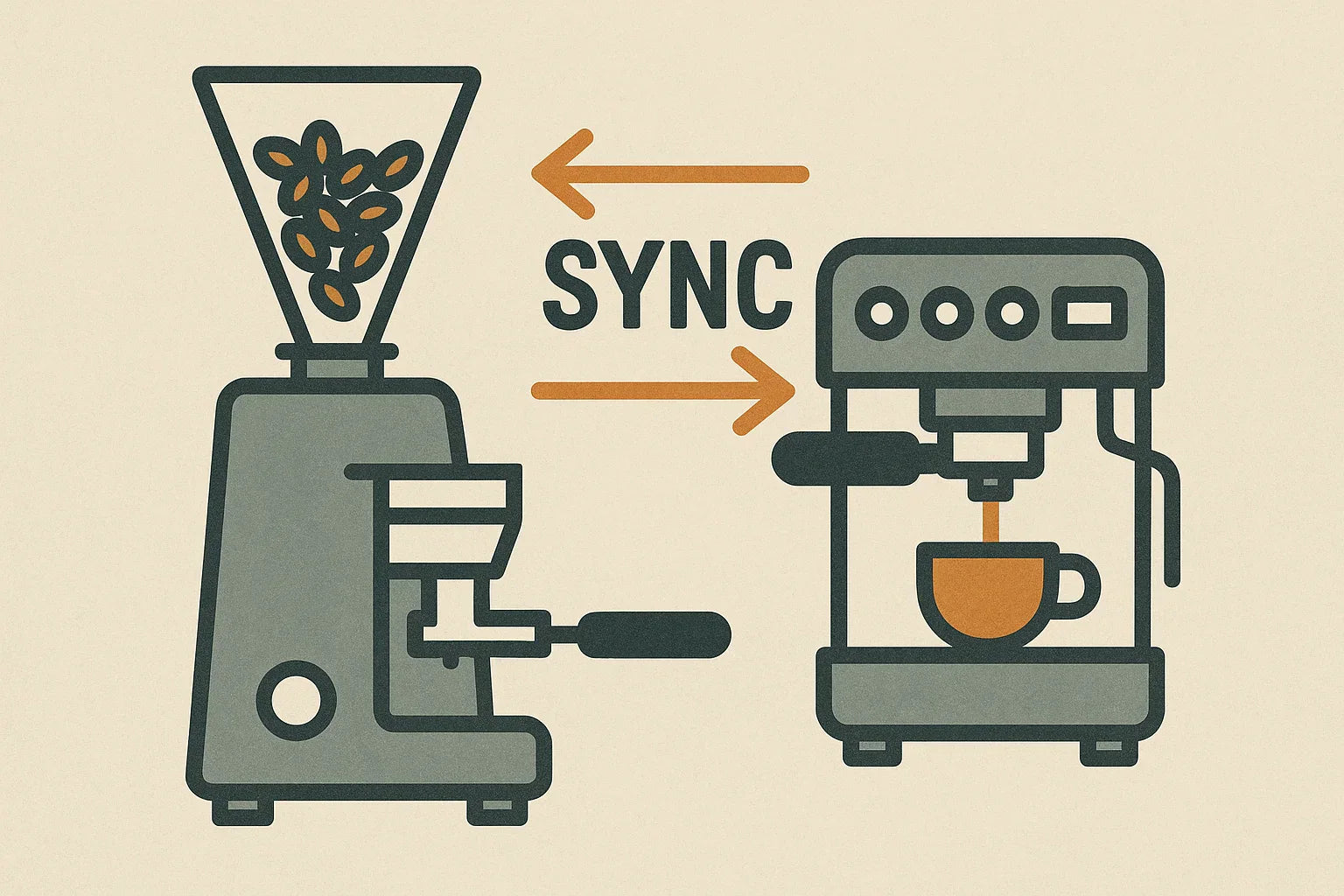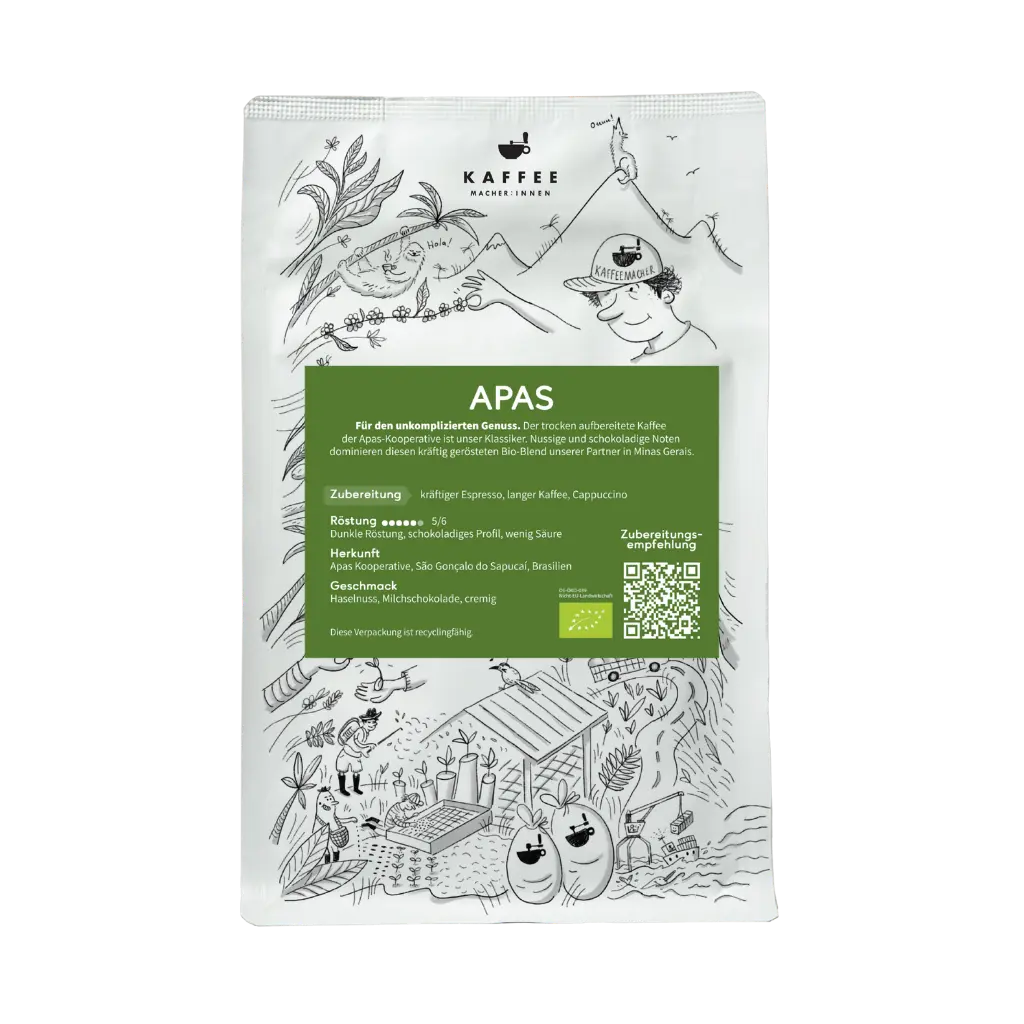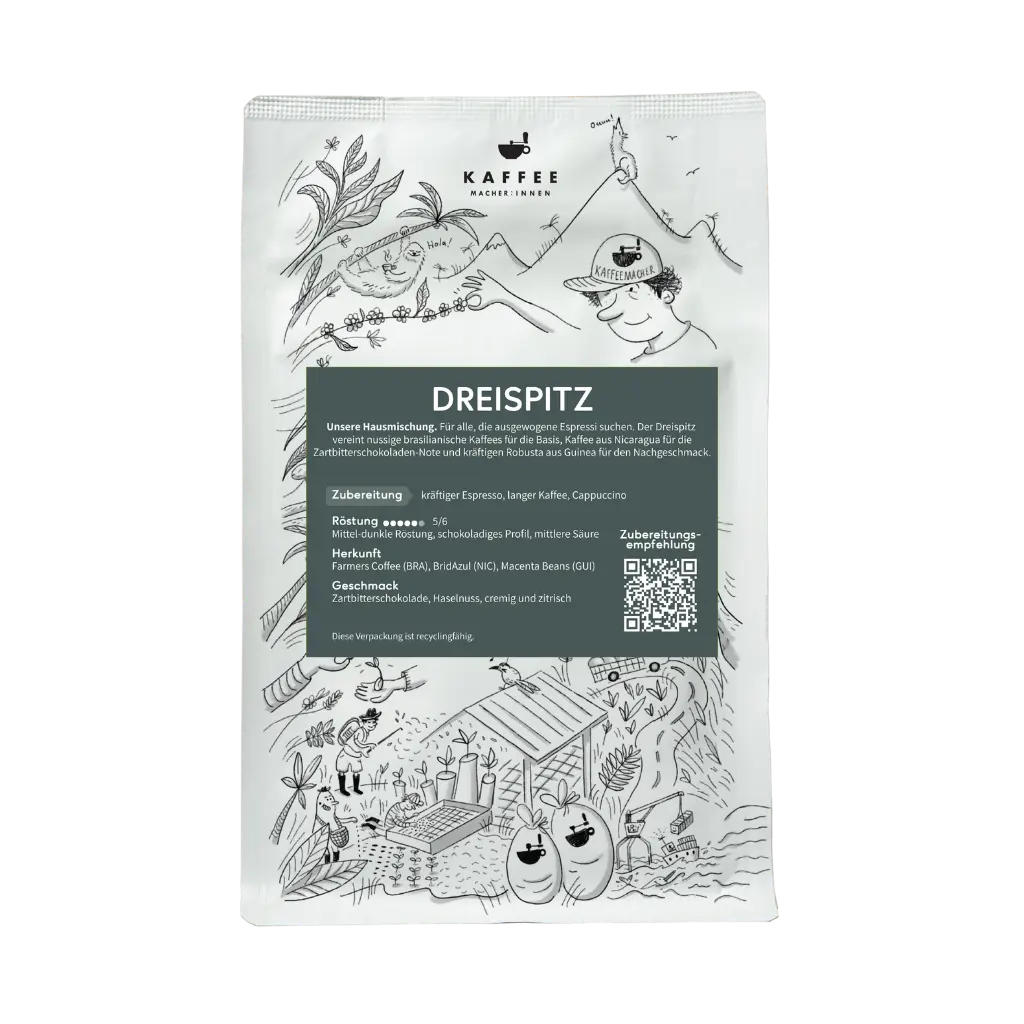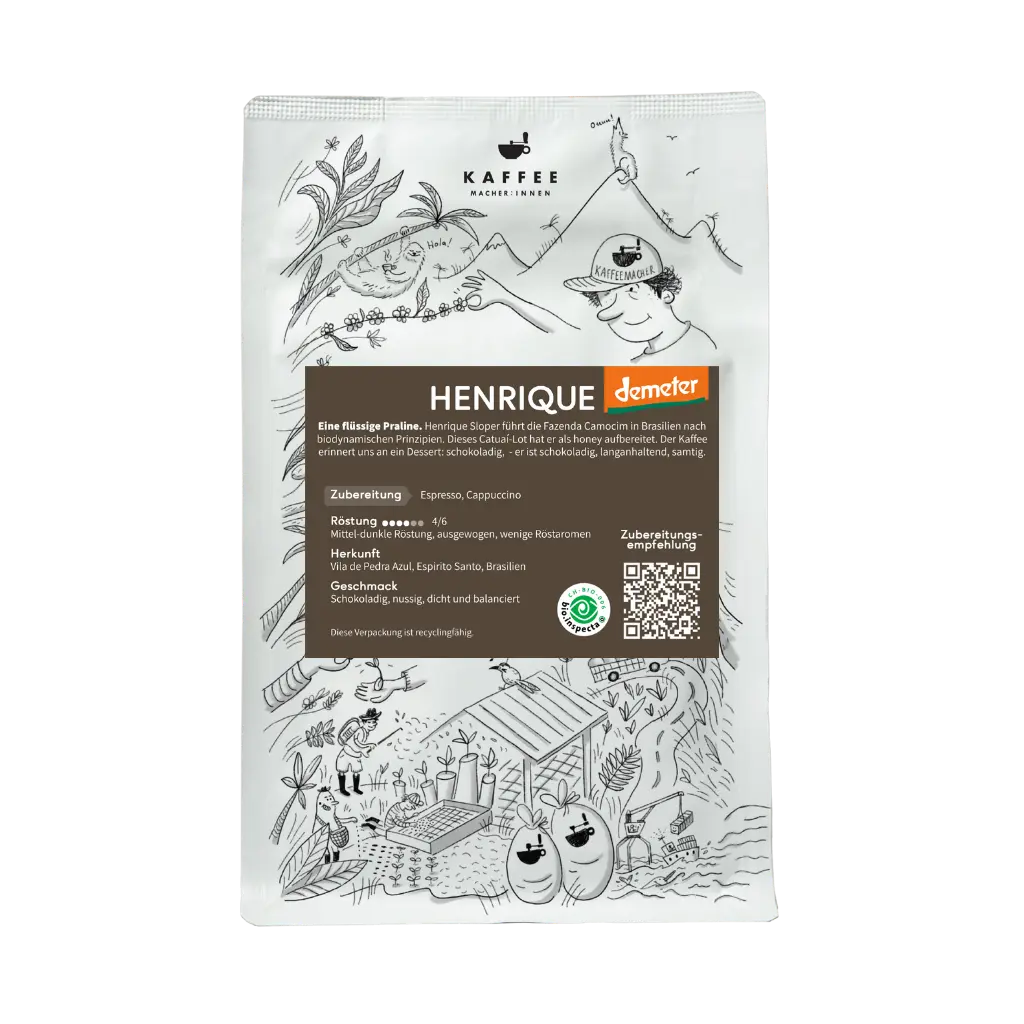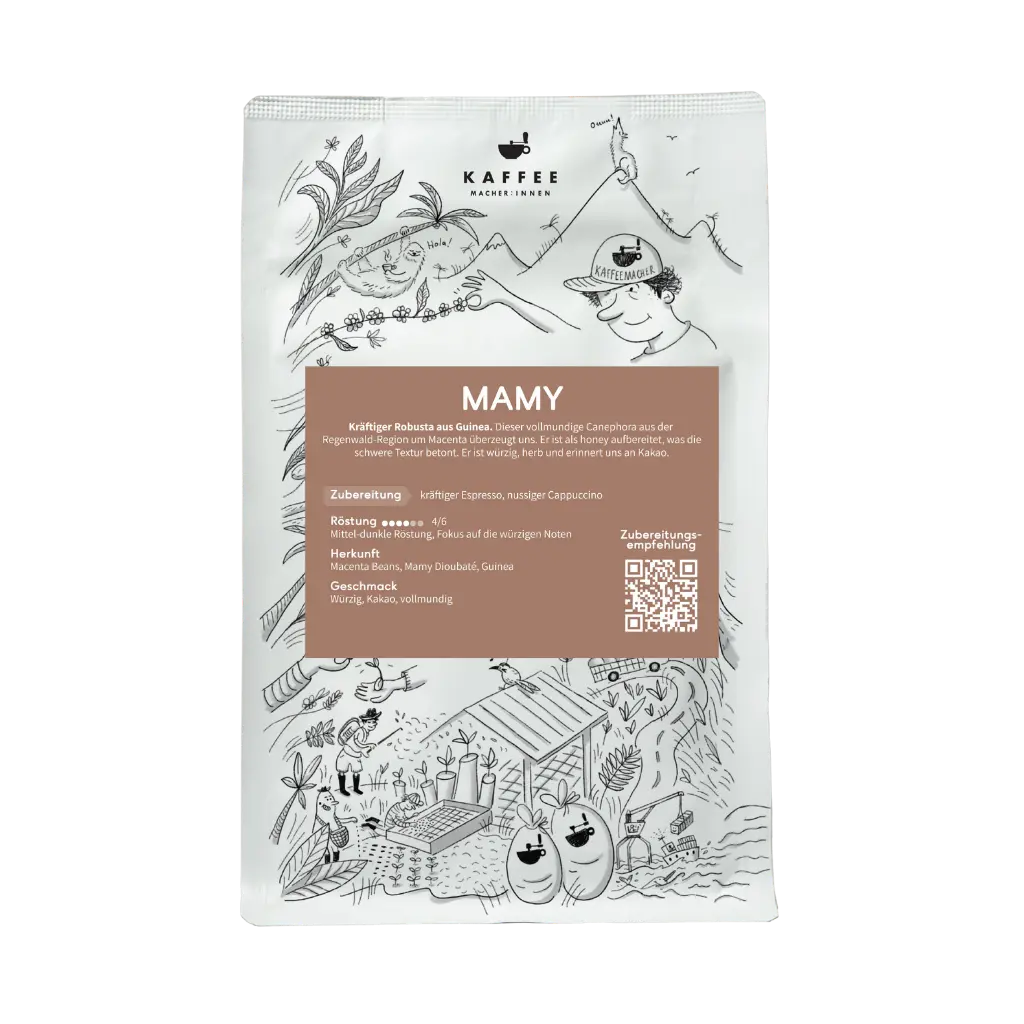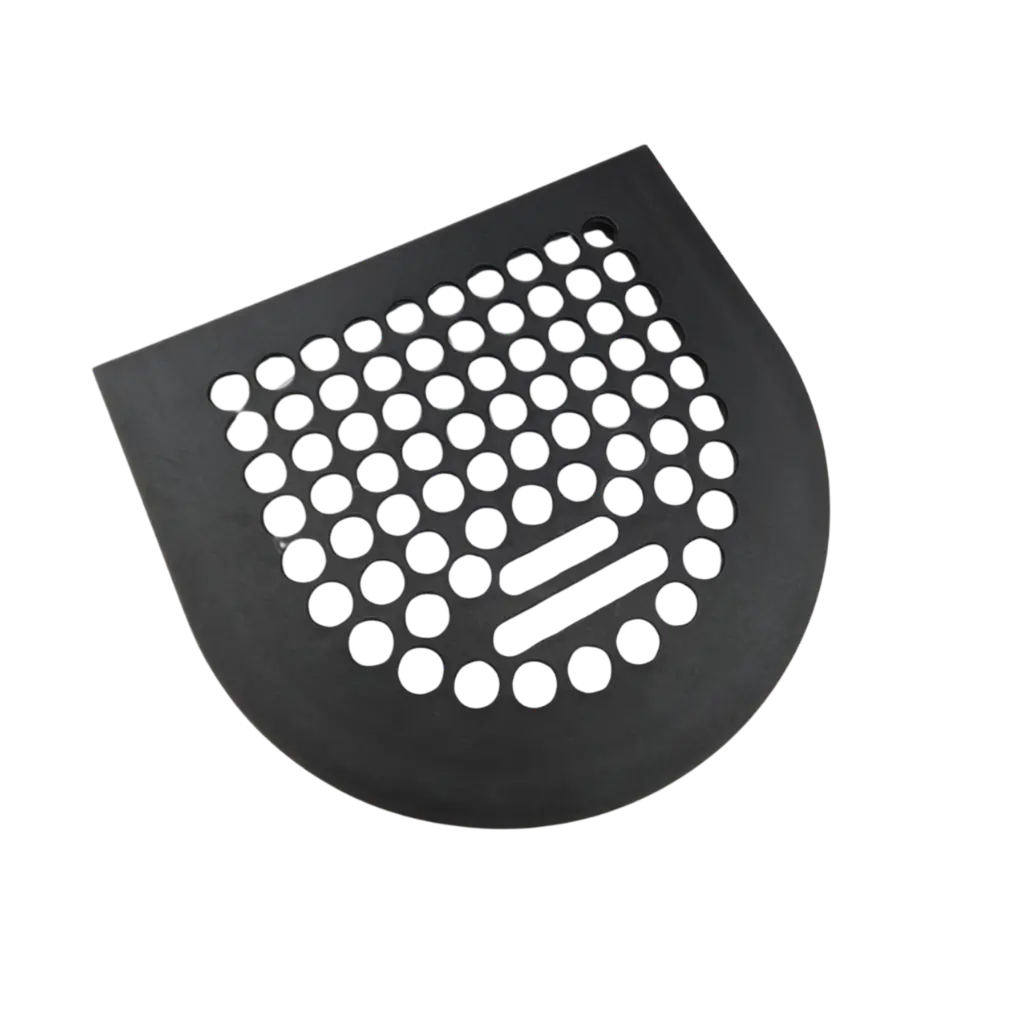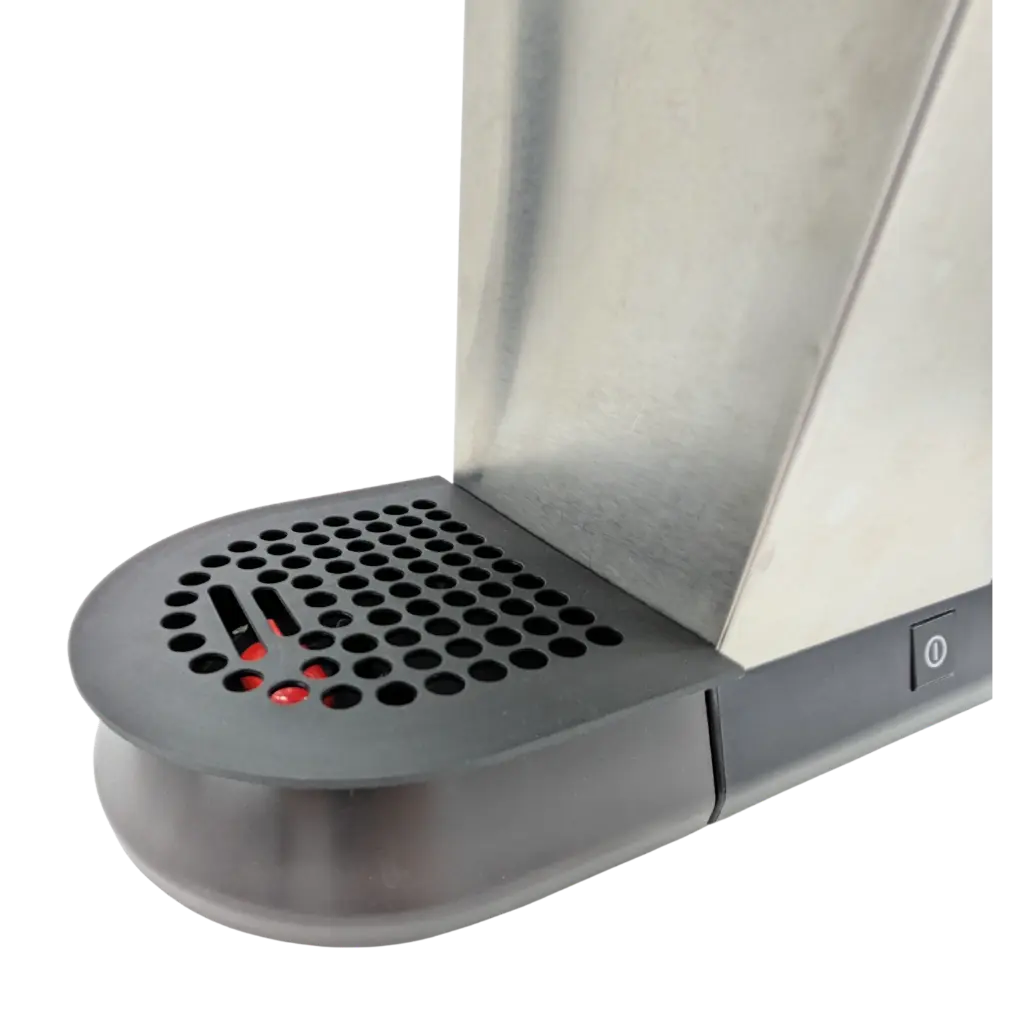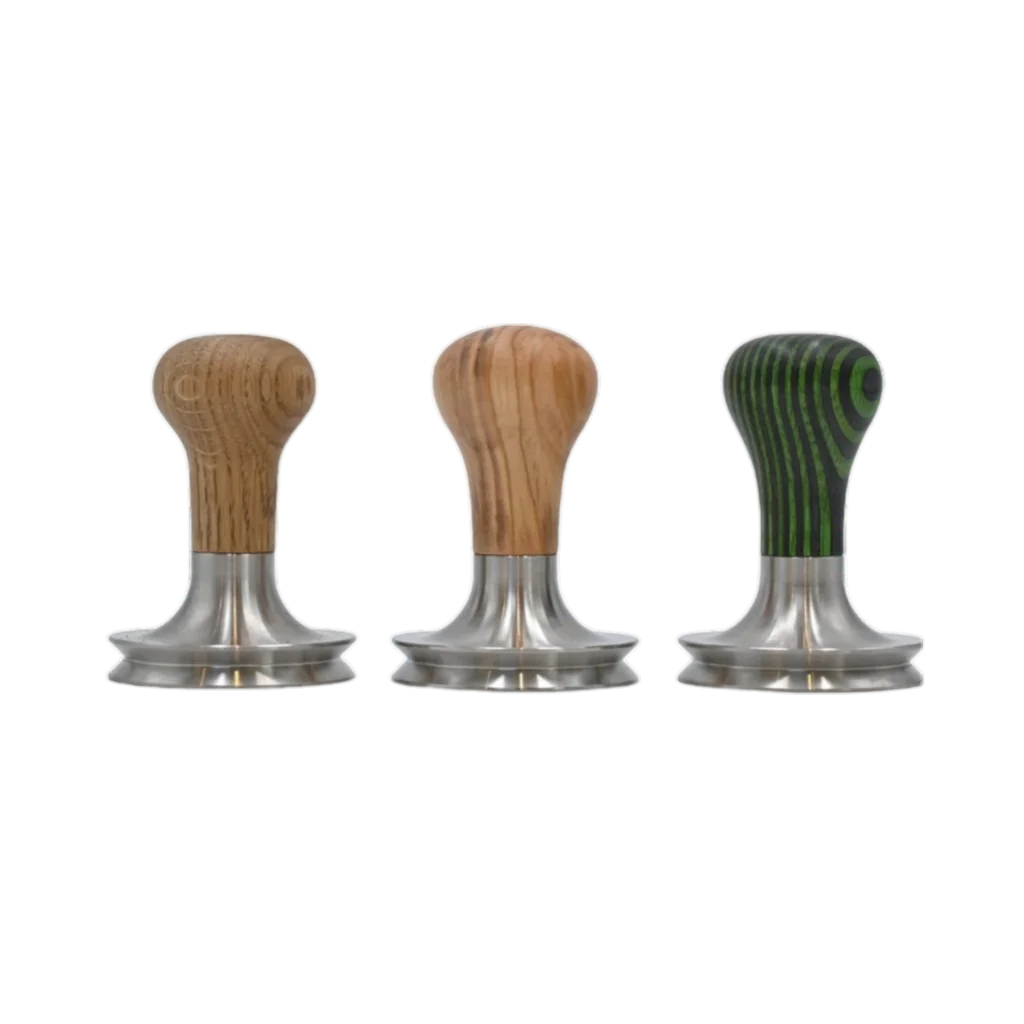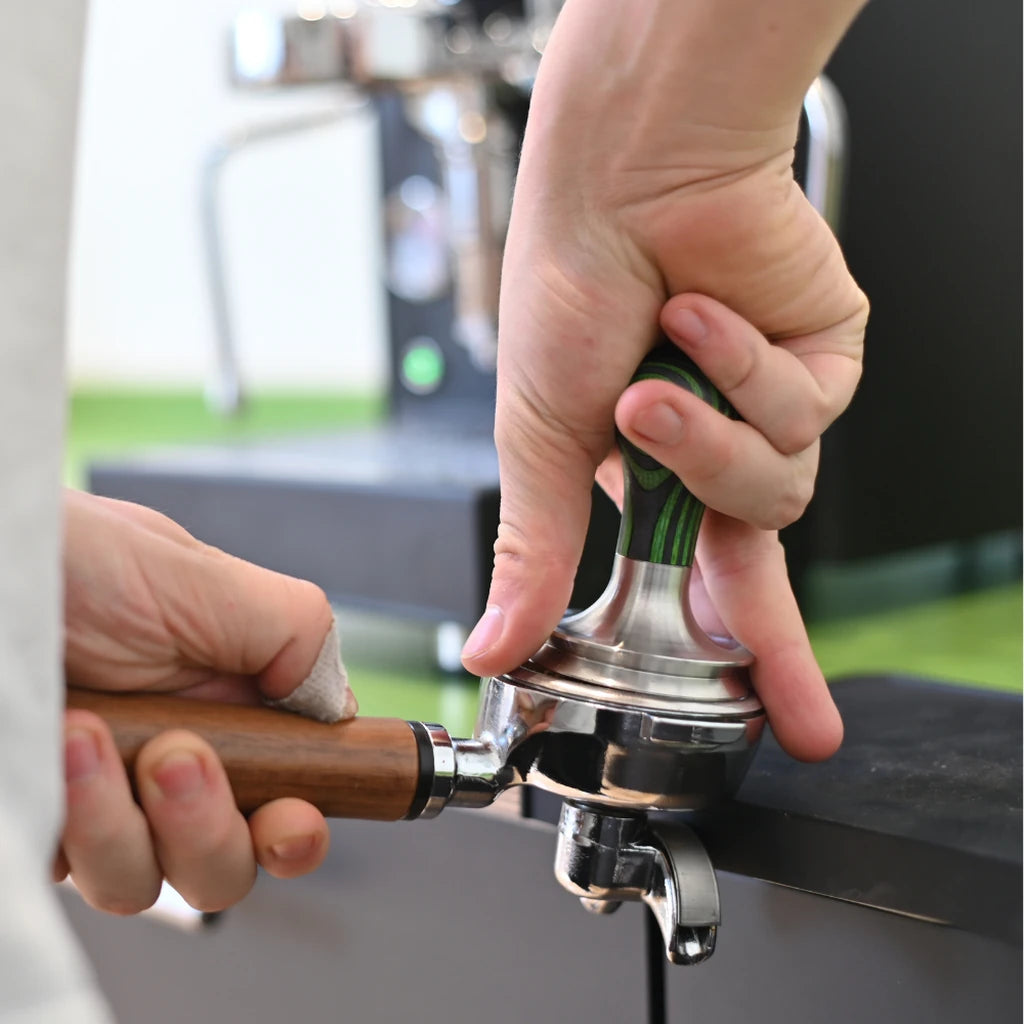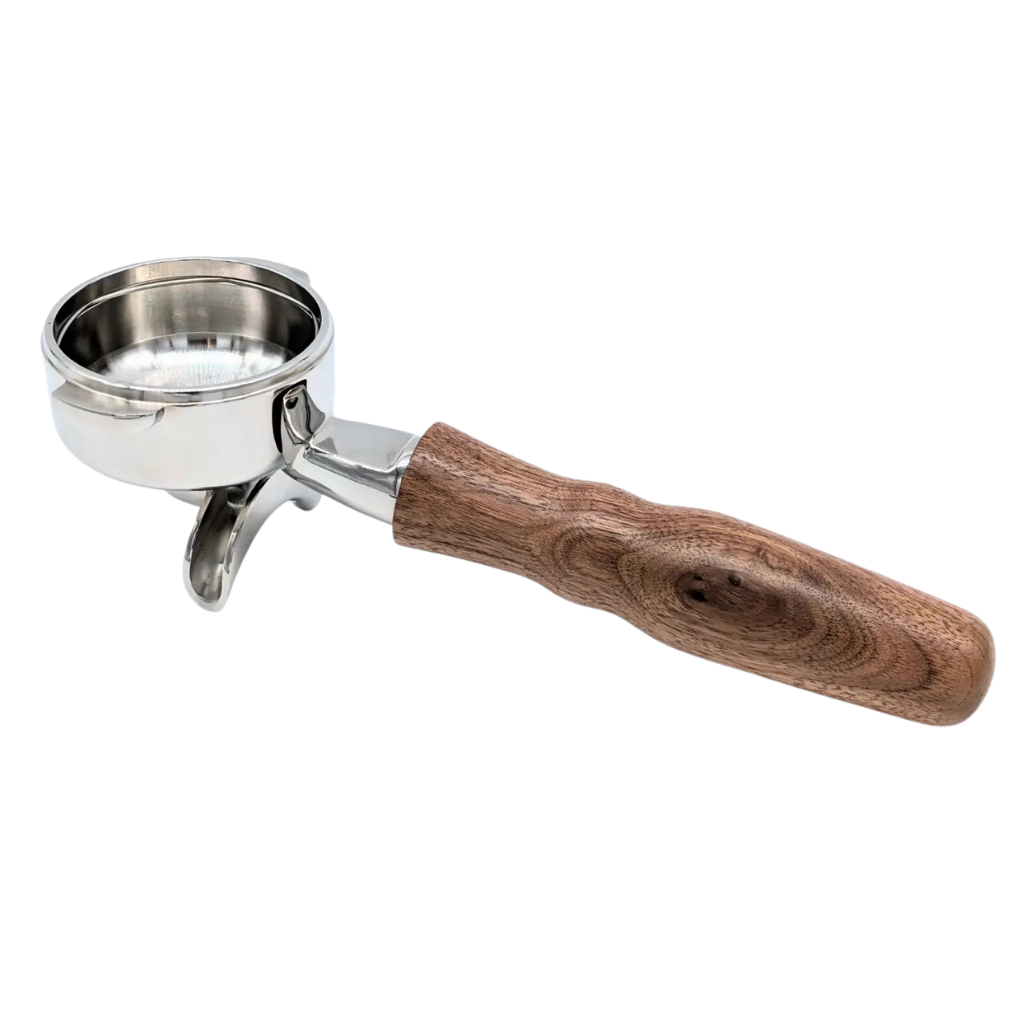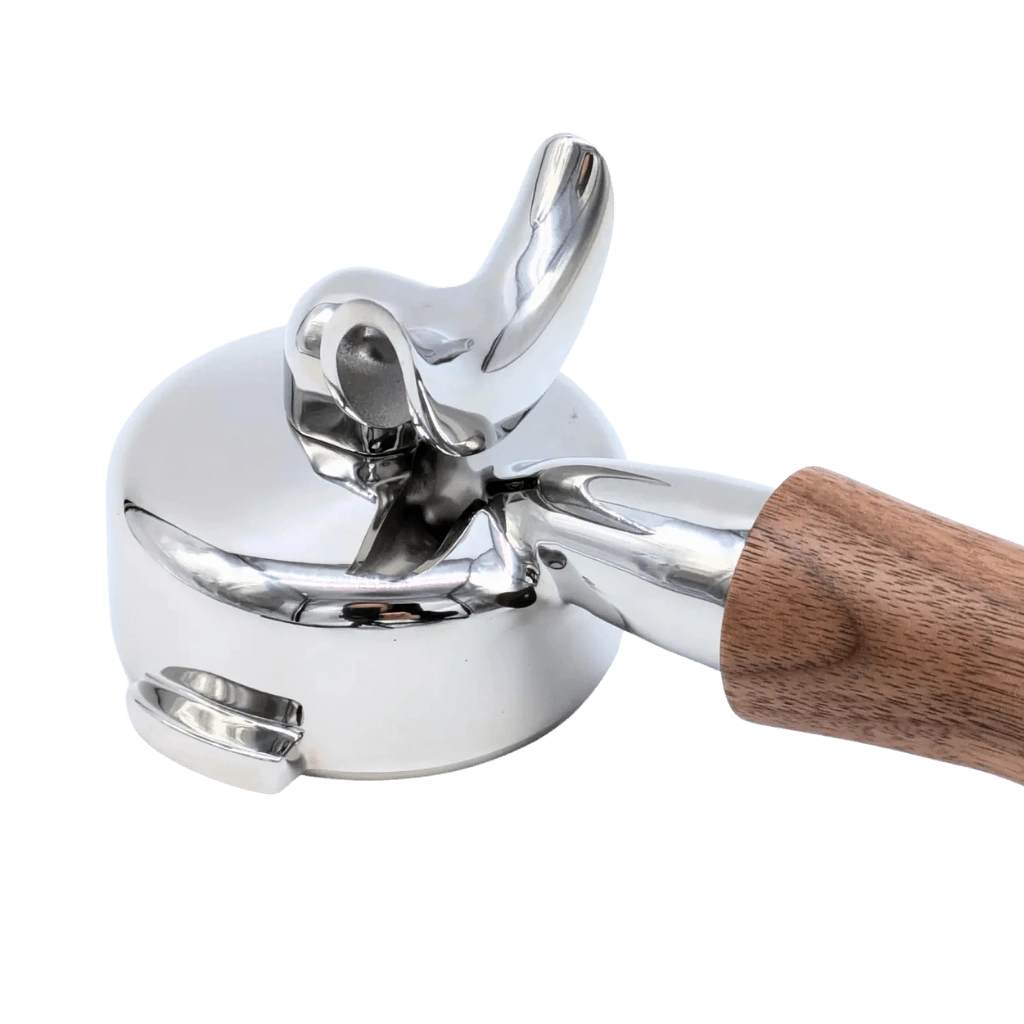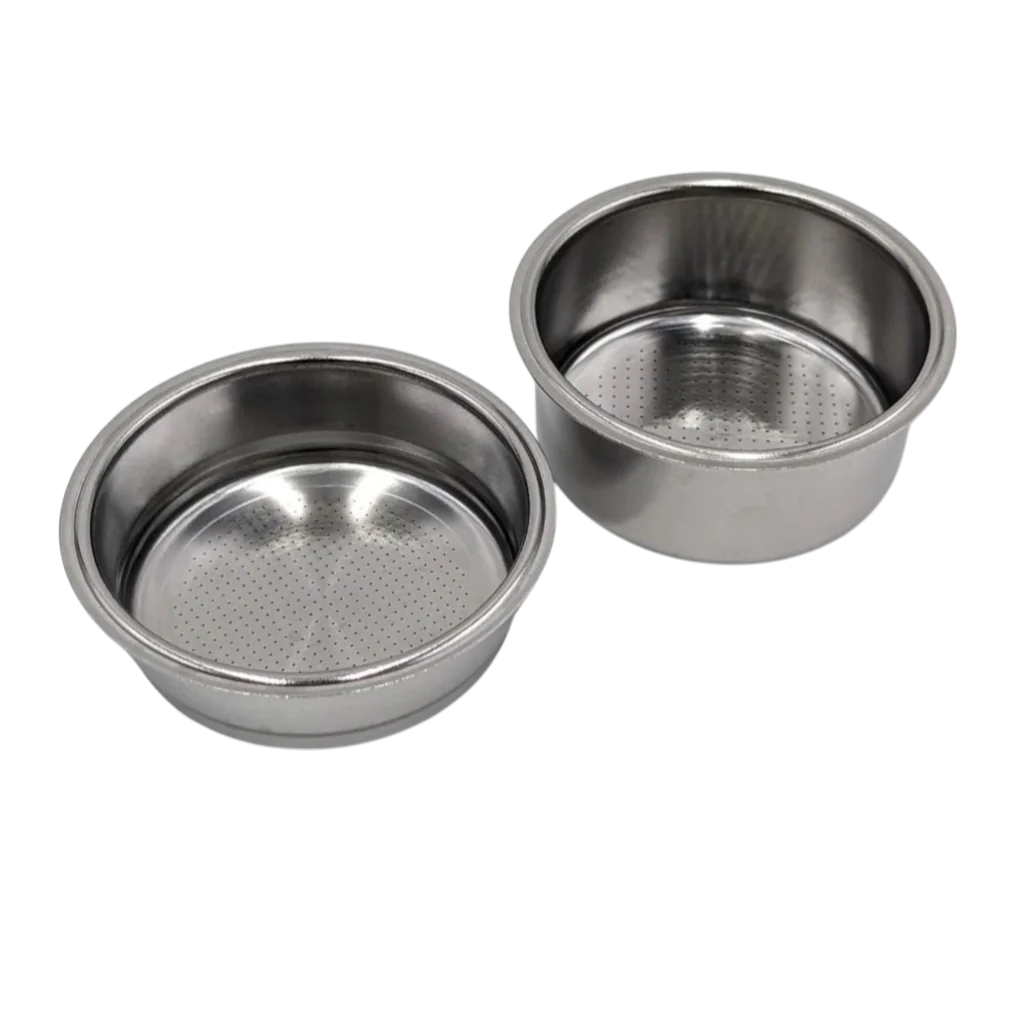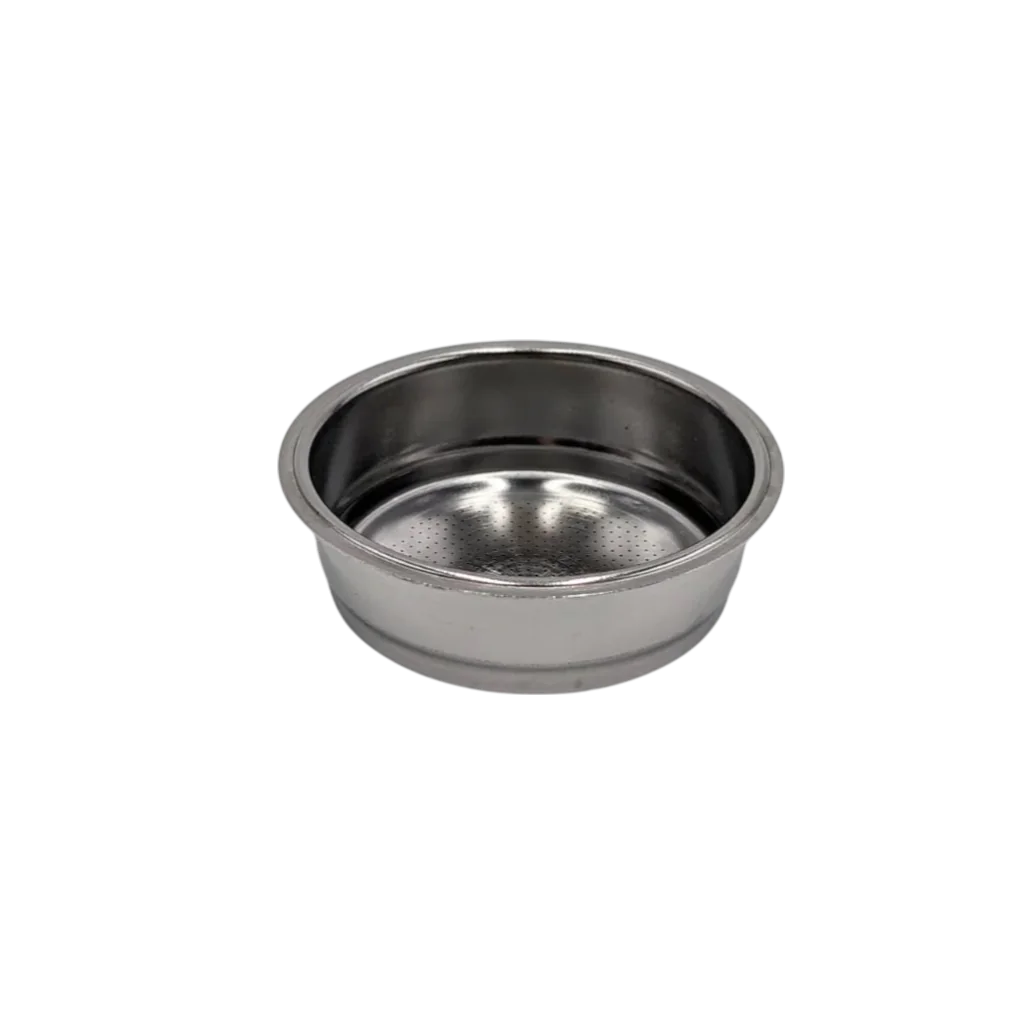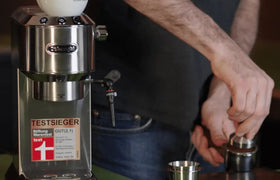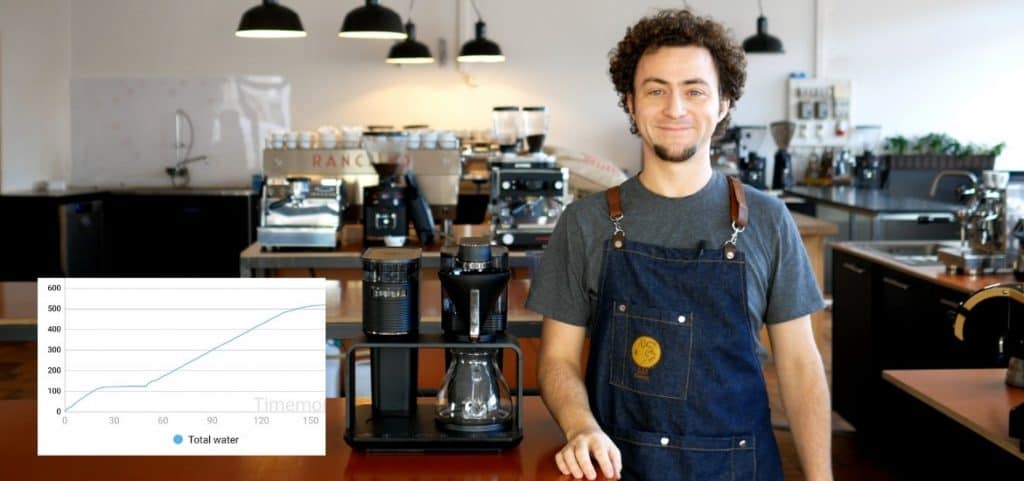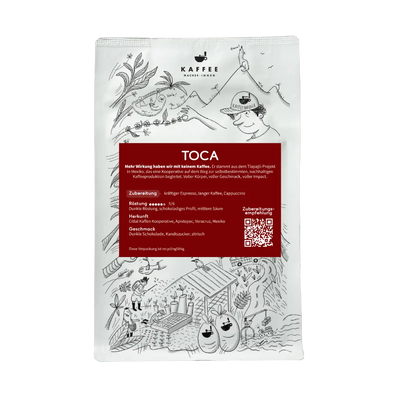Melita's new flagship filter coffee machine is called the Melita EPOS. EPOS stands for " electric power over system ." Or "epos" for epic? We'll explore that in this intensive test. The Melitta EPOS is a filter coffee machine with an integrated coffee grinder.
First of all, the rotating brewing water dispenser on the Melitta EPOS sets a milestone in coffee water distribution. No other filter coffee machine distributes the brewing water better than the Melitta EPOS. Melitta is taking a huge leap forward in precisely addressing the biggest problem in this coffee machine segment. The machine brews with high precision. The extractions are very consistent, and the flavor is correspondingly excellent.
As a filter coffee fanatic, I take my hat off to this. To truly understand Melita EPOS technology, I conducted my most comprehensive coffee machine test to date. 20 hours and over 100 extractions flowed through the filter.
Unfortunately, the Melita EPOS doesn't perform as well in all aspects, including the brewing water distribution. This really annoyed me during the test . If the grinder and controls had been as well-designed as the water distribution, the Melitta EPOS would be the best filter coffee machine on the market. Instead, it's a first-class brewer with an average grinder and insufficient control options.
But read for yourself and watch the first test video if you want to learn more. An even more detailed video will be released next week. Enjoy.
Distribution of the brewing water – The showpiece
The Melita Epos distributes the brewing water evenly across the entire coffee bed throughout the entire brewing process. This is the most important function when brewing filter coffee and coffee in general. This allows the brewing water to extract approximately equal amounts from all coffee particles.
The Melitta Epos thus achieves something that no other filter coffee machine has achieved so well. The vast majority of the ground coffee drips into the center of the coffee cake. This creates enormous turbulence, and a large portion of the soluble coffee particles is extracted from the surrounding coffee grounds. It's important to note, however, that not everything that's soluble in coffee is tasty. If too much of the ground coffee is extracted from the coffee grounds, the coffee will taste bitter. This is called over-extraction .
In the case of a coffee machine that always drips in the same spot, we also have under-extraction. This occurs at the edges of the coffee filter, where the coffee grounds are not sufficiently surrounded by water. There is a lack of flow and turbulence. Insufficient extraction leads to a sour, sometimes aggressive, and unpleasant taste.

The result in the cup is unbalanced, with a high level of bitterness and acidity, which overshadows the coffee's positive flavor. It's almost absurd that the vast majority of filter coffee machines, both old and new, still feature this technology.
At the same time, this is the reason why hand-brewed coffee almost always tastes better. The brewer can then control how the water is added.
As if hand - brewed – EPOS as in “electric power over system ”
After brewing starts, it takes 5 to 15 seconds for the brewing arm to begin rotating and the brewing water to be distributed over the coffee. Three holes dispense the water, spaced 1.5 cm apart. The fact that Melitta calls the rotating water distribution an "electric pour-over system" is quite amusing, considering that Melitta Bentz once brewed by hand. "Melitta – electrically brewed like Melitta" would have sounded odd, though. At the same time, the machine's name is also a reference to the trendy hand-brewing scene, which likes to throw around anglicisms. Filter coffee is hip and young. EPOS also sounds good for epic, which is the highest item category in many computer games.
And indeed, the pour-over system brews almost like hand brewing, and even better. The machine brews consistently and controls the amount of water. It also alternates between single and triple pours. And triple pours are something no hand brewer can manage.
The coffee grounds are coated very evenly. The triple jet creates considerable turbulence in the brewer, ensuring that all the coffee grounds are extracted evenly. The hand brewer solves this problem by stirring the coffee. The triple jet, combined with the consistent action, performs equally well.
Brewing – Constant as clockwork
In total, I brewed around 100 times with the Mellita EPOS. The consistency is truly impressive! The EPOS rotates like clockwork. This is also impressively demonstrated in the test video. To test the brewing unit on its own and not limit itself by the built-in grinder, I brewed pre-weighed coffee portions of 30 grams of coffee with 500 ml using an external professional grinder. The measured strength of the coffee particles (TDS% = total dissolved solids) is remarkably consistent. In 20 brews, I measured a marginal deviation of 0.02 TDS. I don't know of any professional hand brewer that performs better.
| Coffee/Water | TDS | Water cycle | Drip cycle | Quantity output | extraction |
| 30g/500g | 1.36% | 02:24 | 03:08 | 425 | 19.27% |
| 30g/500g | 1.37% | 02:21 | 03:07 | 425 | 19.41% |
| 30g/500g | 1.37% | 02:20 | 03:07 | 422 | 19.27% |
| 30g/500g | 1.38% | 02:22 | 03:09 | 422 | 19.39% |
| 30g/500g | 1.36% | 02:21 | 03:08 | 422 | 19.13% |
Conclusion on water distribution
The water distribution over the coffee grounds is the best I've ever experienced in a filter coffee machine. It's a real pleasure to use, and the brewing results are extremely consistent.

For me, there's only one drawback here. While the machine's description states that it brews using individual brewing profiles, this is only partially true. The EPOS delivers precisely, rotates consistently, and also controls all three brewing water outlets relatively evenly – across all brewing profiles. While it brews the smallest coffee quantity of 2 cups or 250 ml of water with a slightly shorter pre-brew time of 90 milliliters and 45 seconds, this is a long time, and unfortunately, it can't be programmed differently. All other brewing quantities are pre-brewed with 120 milliliters of water and a time of 50 seconds.
The outermost water outlet is also supplied with water very early on. This means that with smaller coffee quantities (2 cups), the outermost water outlet at the beginning of brewing does not wet the coffee grounds, but rather the filter paper. However, the purpose is to extract coffee, not paper, and there is a risk that the water will slide past the coffee.

Nevertheless, the distribution of the brewing water is impressive and deserves 9 out of 10 possible points!
Throughput speed
Another important criterion for a good brewer is the throughput speed. If water is added too quickly, it sits on the coffee bed and lacks turbulence. In this case, the extraction is also too low, meaning not enough coffee is extracted from the coffee bean.
If coffee is added too slowly and rinsed repeatedly in batches, repeated impact turbulences will occur over a very long period of time, resulting in a very high level of coffee particle release. The coffee is then in contact with water for too long.
The Melitta EPOS strikes a good balance. It adds a bit too much water during the pre-brewing phase, but this ensures that all the coffee is thoroughly moistened. It then brews very consistently, adding approximately 100 milliliters of water every 20 seconds. That's a good rate. The best thing would be if this water quantity could also be controlled, so that the pre-brewing process, in particular, would run differently.
Why pre-brewing or blooming?
First of all, it's very positive that the Melitta EPOS has a pre-brewing function. Instead of continuously pouring from the beginning, this is activated by default when the pre-infusion button is lit. Pre-brewing is especially useful when the coffee is fresh. Good coffee is always fresh , and with a built-in grinder, it's also freshly ground.
In this case, the coffee grounds still retain a significant amount of CO2 from the roasting process. Pre-brewing at a high temperature allows the CO2 to escape, leaving it out of the coffee. This makes sense because CO2 gives coffee a carbonated aftertaste. Furthermore, the escaping CO2 swirls the coffee bed. This leads to uneven extraction and should be avoided. Therefore, pre-brewing is especially useful for fresh and dark-roasted coffees with more CO2. This pre-brewing process is called blooming because the coffee literally opens up like a blossoming flower.
There's a pre-brew function, which is a plus compared to many conventional filter coffee machines. The flow rate is good. Since neither of these functions can be controlled, it loses two points, but the overall rating is still very good, with an 8 out of 10 for the flow rate.
Brewing temperature of the Melitta EPOS
The set brewing temperature is at the upper limit. I measured relatively consistent temperatures of 98 degrees Celsius at the water outlet. The brewing temperature in the cake was consistently at 94–95 degrees Celsius. These high temperatures are only a major problem with a darker roast.
Dark roasted coffees already have a lot of bitterness. High temperatures further intensify this impression. For high-quality, lighter roasts, high temperatures aren't a problem.
If there were a temperature adjustment option, the brewer itself could make certain adjustments and adapt the temperature to the coffee being used. Unfortunately, this isn't the case. Hardly any filter coffee machine has this option. But the Melitta EPOS, with its price of around €300, also falls into the highest price segment. Therefore, the desire for such a function doesn't seem unreasonable. And if you want to develop a brewer for all coffees and customer groups, then adjusting the brewing temperature is almost essential.
Therefore, the Melitta EPOS scores rather average here. I give it 6 out of 10 points for temperature.
Does the coffee taste good?
Ultimately, a coffee machine should, above all, make good coffee. The Melitta EPOS does this brilliantly, in some cases. The results were particularly excellent, especially with high-quality coffees directly from the roaster, ground to the desired fineness using an external grinder rather than the built-in grinder. I've had some of the best coffees I've ever had with a filter coffee machine.
The machine's strengths lie in the larger brewing volumes. It performs particularly well at 750 ml. In this case, coffee quantities of around 46 grams are required. With this large amount of coffee, the outer opening of the brewing arm only briefly touches the paper. With its continuous rotation, the machine creates a pronounced turbulence. It operates with great precision. It's a joy!
It performs less well with smaller coffee volumes. I especially advise against 250 ml/2 cups. It's better to brew by hand. I also can't recommend using dark roasts. The bitterness in the cup at high brewing temperatures was unpleasant. Or to put it another way: the machine couldn't play to its strengths here. I provide some filter coffee recommendations from roasters in Germany, Switzerland, and Austria in my article on coffee selection .
Overall, the filter coffee machine makes good coffee, giving the Melitta EPOS 8 out of 10 points. I can't help but deduct the points, as the setting options are too limited to fully exploit the machine's capabilities in terms of temperature and smaller water volumes.
Texture and appearance
The wide shape, the filter holder on the U-shaped arch, makes a statement. The Melitta EPOS breaks away from the typical tall and narrow shape of filter coffee machines and looks more like a fully automatic coffee machine. The EPOS is available in silver and black and gold and black . It's meant to be classy.
Unfortunately, the material doesn't match the appearance. As soon as you stand in front of the machine, it becomes clear: it's made entirely of plastic. And that doesn't really feel high-quality. The plastic parts give way when you press them lightly. The machine isn't particularly sturdy. You can use plastic, but this is where expectations and reality clash. For the price, the online advertising, and filter coffee bags that no longer come in bulk packages but in a fancy envelope—I'd like to see a stronger expression of this in the machine as well.
In addition, there are major structural defects and problematic controls – regardless of the fact that not much can be controlled.

Wherever brewing takes place, water flows and drips. The cracks in the base of both the grinder and the brewer are designed in such a way that water can penetrate from above. A plumber who works in such a wet area of the bathroom would no longer be given any business. I haven't found a way to dry out the moisture.
The buttons don't provide any haptic feedback, but instead light up when activated. They activate very quickly, which led me to accidentally activate the grinding button several times, causing the grinder to grind away.
The plastic lid of the beautiful glass carafe fell into the opening several times, and I had to fish it out of the carafe. This doesn't happen when it's sitting on the carafe, but when it's placed on the carafe, it can easily fall in. This could certainly have been prevented with a slightly different shape.
The water tank is removable and can be filled directly at the tap. The markings are very precise, allowing for accurate filling.
Overall, the impression remains that the Melitta EPOS can't keep up with its first-class brewing unit in terms of materials. In addition to the subjective impression, structural issues (cracks) are also significant. The limited controls, which we'll discuss later in our review of the grinder, also fall short. A 5 out of 10 rating here must also be viewed in light of the very high RRP of €299.
Price-performance ratio of the Melitta EPOS
Of course, €299 is a lot of money. On the other hand, you also get a coffee machine and a coffee grinder. But as a consumer, the decision as to whether I even want that is made for me.
Personally, I would buy the Melita EPOS without a grinder for €180 and consider the price reasonable. I would have paid €300 for the control options, temperature control, and profile saving – without a grinder.
Nevertheless, it must be said that you get a lot of value for your money. And if you follow our brewing recipes, you'll also brew excellent coffee with the Melitta EPOS.
Our impression: 6 out of 10 points.
Bonus points for something special?
If there are things I particularly like about a filter coffee machine that didn't make it into the previous text, I'll mention them here. With the Melitta EPOS, this includes the ability to turn off the heating plate after brewing by long-pressing the "Brew" button. Coffee that's kept warm doesn't taste good, and Melitta mentions this in the manual. The fact that this is also pointed out and that the machine automatically shuts off after 40 minutes is a positive.
There's also a "manual extraction control." If you want to brew your own coffee, you're obviously better off with a hand filter and a pour-over pot. But it's still nice to have this feature. While you can manually adjust the direction of the brewing arm, you can't adjust the position of the holes. Saving the manual brewing process isn't possible either.
An option with a thermos flask and no hotplate was not available at the time of purchase. I would have rated that positively, because a thermos flask preserves the coffee flavor better over a 45-minute period than a hotplate.
The Melitta receives two extra points for the option to switch off the heating plate and the manual extraction control.
Conclusion on the evaluation of the Melitta EPOS filter coffee machine
The Melitta EPOS operates on two fronts. It's both a filter coffee machine and a coffee grinder. I've decided to evaluate each separately and will continue to do so in future tests of filter coffee machines with grinders. This will allow for a better assessment of the machine's performance in both areas.

Integrated coffee grinder of the Melitta EPOS
On its own, the Melitta EPOS grinder performs well. A good grinder is characterized by a uniform grain size (particle distribution). For example, if you select a medium grind, as many coffee particles as possible should correspond to this grind or the desired grain size. Smaller particles are extracted significantly more intensively (overextraction). Larger particles are extracted less intensively (underextraction). We performed a manual test using only micron sieves and obtained satisfactory results. A sample of ground coffee has been submitted, and we are awaiting the results.
The mill allows a total of 3 ½ control options.

1. Grind quantity by selecting the cups.
For example, if you select 4 cups, you'll grind a little more than 30 grams. The amount depends on the quality (density, moisture content, roast, age) of the ground coffee. Therefore, at least a slight adjustment of the grind size is almost always necessary.
2. “Starch” beans
The grind size can be easily adjusted by choosing one, two, or three beans. Increasing the grind size to two or three beans uses more coffee grounds than with "one bean."
3. Grinding adjustment
The grinding level can be adjusted to three settings: fine, medium, and coarse. The manual does not provide any further adjustment options.
Additionally, the total grind size can be increased or decreased by 10%. The controls are so complicated that even the proofreaders of the manual probably didn't notice an error. Paragraph 3.5, in the section on fine adjustment of the grind size, states that when LED 2 is lit, the grind size is reduced. The correct setting would be LED 1. I pointed this out to Melitta in an email, and they confirmed it.
Why this can be quite problematic
If your coffee tastes good, then everything's fine! If your grinder produces the right amount of coffee at the right grind size for the coffee you're using, you can skip this chapter. Unfortunately, that would be a fluke, and you could face the following challenge the very next day, with a different coffee.
I brewed with a 4-cup setting, bean strength 2, and a medium grind. To check the results, I weighed the amount of coffee after grinding and added the exact amount of water.
| cup | bean | MG | Coffee quantity | TDS | Water cycle | Drip cycle | Quantity output | extraction | Brewing ratio | |
| 4 | 2 | medium | 33 | 1.46% | 02:25 | 03:24 | 408.1 | 18.06% | 15.15 | |
| 4 | 2 | medium | 34.2 | 1.55% | 02:12 | 03:20 | 404.2 | 18.32% | 14.62 | |
| 4 | 2 | medium | 33 | 1.52% | 02:22 | 03:30 | 409.3 | 18.85% | 15.15 | |
| 4 | 2 | medium | 34.8 | 1.56% | 02:12 | 03:24 | 402.3 | 18.03% | 14.37 | |
| 4 | 2 | medium | 34.4 | 1.58% | 02:11 | 03:17 | 406.1 | 18.65% | 14.53 | |
| 4 | 2 | medium | 34.4 | 1.54% | 02:10 | 03:10 | 405 | 18.13% | 14.53 | |
| 4 | 2 | medium | 31.7 | 1.53% | 02:25 | 03:35 | 408.8 | 19.73% | 15.77 | |
| 4 | 2 | medium | 33 | 1.58% | 02:18 | 03:30 | 407 | 19.49% | 15.15 | |
| 4 | 2 | medium | 32.2 | 1.54% | 02:18 | 03:28 | 406.1 | 19.42% | 15.53 | |
| 4 | 2 | medium | 31.7 | 1.52% | 02:19 | 03:32 | 408.1 | 19.57% | 15.77 |
The brewer demonstrated amazing consistency. Both in taste and in the refractometer reading, the coffee was quite strong. This can be explained by the high TDS (total dissolved solids), which is the concentration of dissolved coffee particles. Filter coffee typically has a strength of approximately 1.2 to 1.5%. Depending on the coffee used, the strength can be stronger or weaker. In our case, the coffee was very strong, and the acidity was slightly unpleasant.
To reduce the strength, we can do two things: either increase the grind size or use less coffee. You should never do both at once, as otherwise the results will be difficult to reproduce.
So I used less ground coffee. This was also supported by the fact that the ground coffee used above was at the lower end of the extraction range (18.83% on average). Extraction is what we extract from the bean. A good value for filter coffee is between 18 and 22%. In the lower range, below 18%, the acidity of the coffee is emphasized. In the upper range, above 22%, the coffee tastes more bitter.
| cup | bean | MG | Coffee quantity | TDS | Water cycle | Drip cycle | Quantity output | extraction | ratio | |
| 4 | 1 | medium | 30 | 1.47% | 02:23 | 03:30 | 425 | 20.83% | 16.67 | |
| 4 | 1 | medium | 30 | 1.42% | 02:22 | 03:22 | 426 | 20.16% | 16.67 | |
| 4 | 1 | medium | 30 | 1.42% | 02:30 | 03:30 | 428.7 | 20.29% | 16.67 | |
| 4 | 1 | medium | 30.5 | 1.44% | 02:22 | 03:25 | 426.4 | 20.13% | 16.39 | |
| 4 | 1 | medium | 30 | 1.45% | 02:24 | 03:28 | 429.5 | 20.76% | 16.67 |
The subsequent grindings were impressively consistent. The grinder ground 30 grams very precisely several times in a row. This is remarkable, as hardly any professional grinder can achieve this level of precision.
The coffee tasted significantly better. It was balanced and sweet, with a good balance between acidity and bitterness. However, I wanted to continue fine-tuning it, also to test the limits of the grinder.
Since the grind size was perfect, I had the option of a coarser grind. So I set the grinder to coarse.
| cup | bean | MG | Coffee quantity | TDS | Water cycle | Drip cycle | Quantity output | extraction | ratio | |
| 4 | 1 | rough | 32.8 | 1.42% | 02:25 | 03:30 | 414 | 17.92% | 15.24 | |
| 4 | 1 | rough | 33.4 | 1.43% | 02:02 | 03:20 | 400 | 17.13% | 14.97 | |
| 4 | 1 | rough | 32.8 | 1.42% | 02:21 | 03:18 | 411.7 | 17.82% | 15.24 | |
| 4 | 1 | rough | 34.3 | 1.43% | 02:24 | 03:19 | 422.4 | 17.61% | 14.58 | |
| 4 | 1 | rough | 34.1 | 1.51% | 02:26 | 03:21 | 407.8 | 18.06% | 14.66 |
As a result, the grind size also increased again. Instead of 30 grams, the grinder produced an average of 33.48 grams. This no longer corresponds to my desired coffee quantity of approximately 60 grams per liter. As a result, the brewing water used could no longer sufficiently separate the particles. It was too little for the coffee quantity and also too coarse. The coffee tasted sour.
The coffee quantity could no longer be adjusted using the "strength" buttons. By reprogramming the strength buttons with a 10% reduction, the approximately 30 grams were reached again. However, the grind was still not coarse enough.
And now I'd reached the limit of the grinder's capabilities. A coarser grind setting isn't possible. Three settings for adjusting the grind setting are very, very few. Modern grinders offer 30 settings or are even infinitely variable.
Forget about co-developing the mill
The grinder's adjustment options are very reminiscent of the Melitta Aroma Fresh – also a filter coffee machine with an integrated grinder.
There, too, the adjustment options are too limited. However, there is another, major and important difference compared to the Melitta EPOS.
The Melitta EPOS brews with its brewing arm with much more turbulence. This swirling action extracts much more coffee. For this reason, the coarser grind section of the grinder is in significantly higher demand than is the case with a "traditional filter coffee machine."
And this is where things get annoying. The grinder is good in terms of consistency. However, it can't keep up with its more advanced neighbor, the brewing unit. It doesn't deliver the right grind size to allow for flexibility in the brewer's handling. The adjustment options are limited. A 10% increase or decrease in the grind isn't enough to set the desired grind size.
A good brewing does not just consist of a pour over but of the interaction of an exact grind, coffee quantity and pouring.

Final conclusion on the Melitta EPOS
It's truly difficult to offer a nuanced conclusion about the Melitta EPOS. That's why this article has become so long. When judging a football team, the team's performance ultimately counts. Even if someone scores the goals up front, if the defense isn't pulling its weight, it's of little use.
I feel a bit like that with the Melitta EPOS. The consistent development of the brewing arm has been truly excellent. I've never before enjoyed the consistency and quality of the water distribution so much. Bravo!
Unfortunately, the grinder can't keep up with the performance. It's a solid grinder in many respects. However, it's not the right counterpart to support the brewer's performance. Nevertheless, a grinder is a hundred times better than no grinder, because freshly ground coffee is the prerequisite for good coffee. I'm grateful to Melitta for sending this signal to the market.
The machine's setting options are limited. This means the Melitta EPOS misses out on another opportunity to become the best filter coffee machine on the market. This is tragic, because it was absolutely within reach.
Who is this filter coffee machine for?
With its compact size and efficient brewing system, this filter coffee machine is a great choice for anyone who enjoys good filter coffee. If you already have an external grinder lying around, you can use it to compensate for the machine's shortcomings.
I recommend using medium to light filter roasts and high-quality beans. This is more appropriate than the high brewing temperature.
I also think the machine is interesting for coffee schools and roasteries, for courses and to better understand turbulence. The machine's consistency is remarkable, and you can learn a lot even as a hand brewer.
Wish list to Melitta for the EPOS 2.0
I wish:
- PID temperature control
- Display with meal indicator
- Continuously adjustable mill
- Thermos flask and no hot plate
- (Less plastic)
![]()


